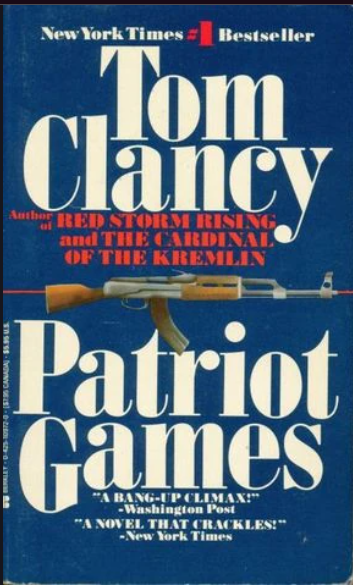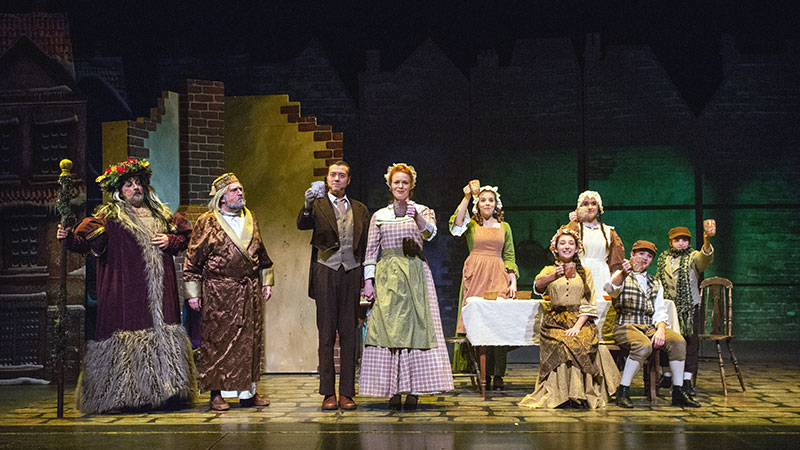
Tom Clancy’s “Patriot Games” is one of the late author’s earlier works, originally published in the year 1987. This thriller is one to be remembered, though it is not without its problems. Capitalizing on a then-contemporaneous conflict known colloquially as The Troubles, which was an ethnic and sectarian struggle between the Irish, Catholic Nationalist community and the Ulster-Scot, Protestant Loyalist community in Northern Ireland that occurred from the late 1960s to the late 1990s Tom Clancy sets Patriot Games in this paramilitary backdrop, pitting Jack Ryan against a fictional Irish terrorist organization called the Ulster Liberation Army or ULA for short.
The book starts out with Jack Ryan, a CIA analyst who works as a professor of history to create his cover, and his family visiting London for a work trip. Ryan meets up with his family at a local park, and while they are swapping stories about the sights and shops they have visited, a passing motorcade is assaulted by three gunmen armed with small arms and grenades. Ryan, being heroic, risks his life in order to save the passengers in the motorcade, subduing one gunman and killing another while the remaining gunman departs from the scene. This act, however, results in heavy injuries that require Ryan to be transported to the local hospital to recover. During the move, he falls unconscious.
Upon waking up, Jack would soon discover that the couple that he had saved were none other than Prince Charles and his late wife Princess Diana. The ULA had orchestrated the hit in an attempt to kidnap the prince and princess to further the cause of Irish Unification. Upon foiling their plot, Jack made himself and his family a target for the paramilitary. The rest of the book involves Jack and his family attempting to evade attempts on their life by the ULA and their allies in the United States.
The book is, as is customary of Tom Clancy’s work, well-written and really allows the reader to feel as though they are in the scenes he describes. Though at the time it was meant to be a story that occurred in the present, it now serves as a historical fiction novel that, unintentionally, documents life of that era as well as showcasing typical American perceptions of The Troubles, the factions that partook in it and American support in the conflict. Indeed, in a brilliant manner, Clancy elucidates as one of the reasons the ULA became so bold as to attack Ryan and his family on American soil was to intentionally sour American perceptions of the Irish Nationalist cause and thus stimy American financial support for their chief paramilitary rival, that being the real world Provisional Irish Republican Army or PIRA.
From a historical perspective, while fictional, Patriot Games could serve as a sort of generalized primer for The Troubles. While not strictly accurate, the book properly illustrates the schism the paramilitaries created. Indeed, the fictional ULA is a splinter organization of the PIRA that had broken away over ideological disagreement, the PIRA favoring Democratic Socialism and the ULA adopting a more radical Maoist iteration of socialism. This mirrors real world history as the PIRA itself was a splinter organization of the Official Irish Republican Army, which was a split predicated on the PIRA leader Billy McKee feeling as though the OIRA and its leadership had become illegitimate due to its adoption of Marxist-Leninist ideology. Though, even so, the book has its historical shortcomings.
One such shortcoming is the naming convention of the fictional Irish paramilitary organization, the Ulster Liberation Army. Simply put, Irish Nationalists would not name their paramilitary organization after Ulster. Indeed, Ulster, despite being a historical province of Ireland, has since come to be associated with British Loyalism, and to be an Ulsterman is to be a loyal subject of the British Crown. This being the case, paramilitaries in Northern Ireland that invoke Ulster, such as the Ulster Defense Association or the Ulster Volunteer Force, would be paramilitaries comprised of Ulster-Scot Protestants and thus enemies of the Irish Nationalists and their respective paramilitary groups. On top of this, Tom Clancy had also had some glaring inaccuracies in his book when referencing real world events.
Perhaps the most egregious of the inaccuracies is the misattribution of the 1979 assassination of Lord Louis Mountbatten, the cousin of late Queen Elizabeth II, to the Irish paramilitary the Irish National Liberation army which was a splinter of the OIRA. In actuality, it was the PIRA that had carried out the assassination and it was one the paramilitary was quite vocal in claiming. This, however, runs contrary to the narrative depicted in the book of the PIRA being, while extreme, an honorable organization. While not a belief that is unique to Tom Clancy in the 1980s, the fact is the PIRA like any paramilitary of the conflict, both Loyalist and Nationalist, was vicious and took part in the ethnic cleansing of Ulster-Scots in the border counties of Northern Ireland and the Republic of Ireland. For a far more historical read of The Troubles, I would wholeheartedly suggest two books, those being Say Nothing: A True Story of Murder and Memory in Northern Ireland by Patrick Radden Keefe and State in Denial: British Collaboration with Loyalist Paramilitaries by Margarete Urwin.
Overall, Tom Clancy’s Patriot Games is a solid thriller that highlights The Troubles of Northern Ireland in a fascinating way. Well-written and well-thought-out, if one finds oneself a fan of action thrillers then this is certainly a book to pick up. One should always keep in mind, however, that historical fiction while good entertainment should not be relied upon as a venue of historical education.




